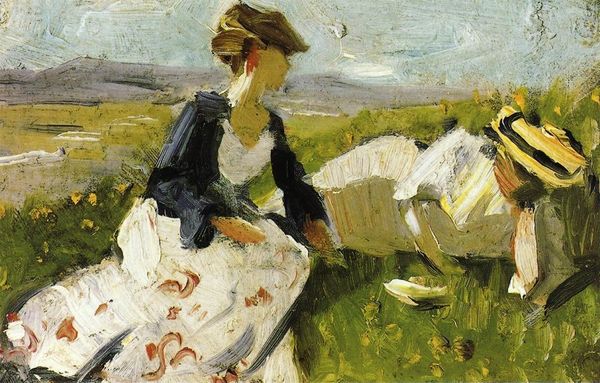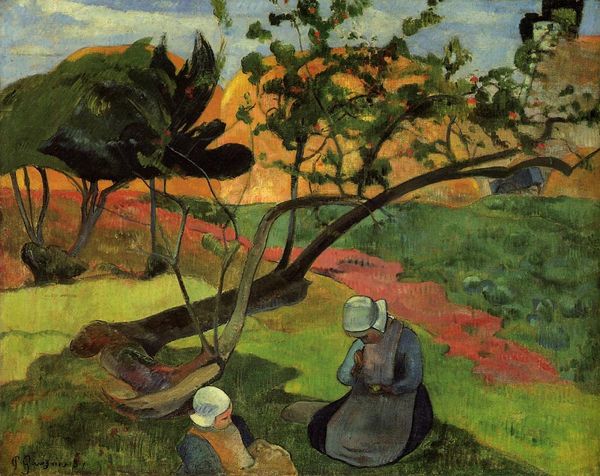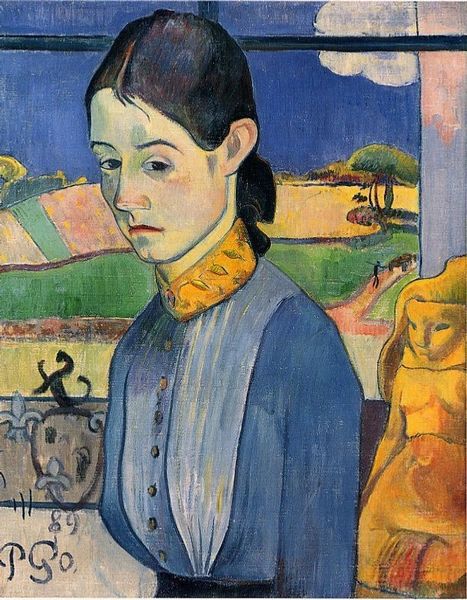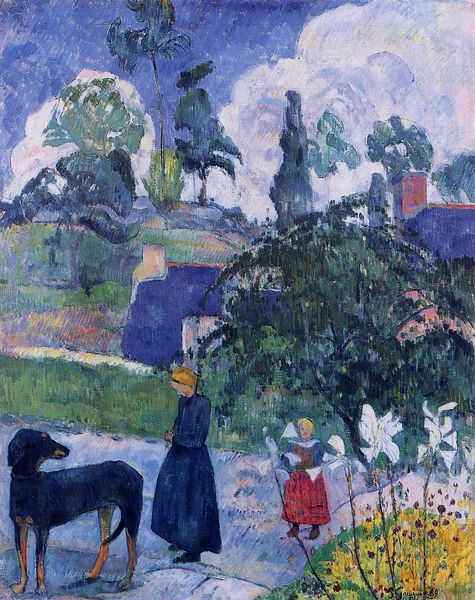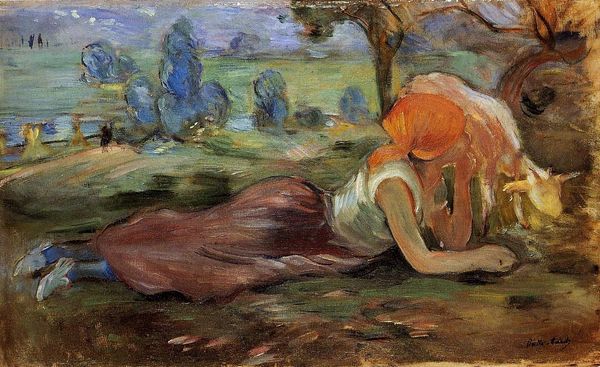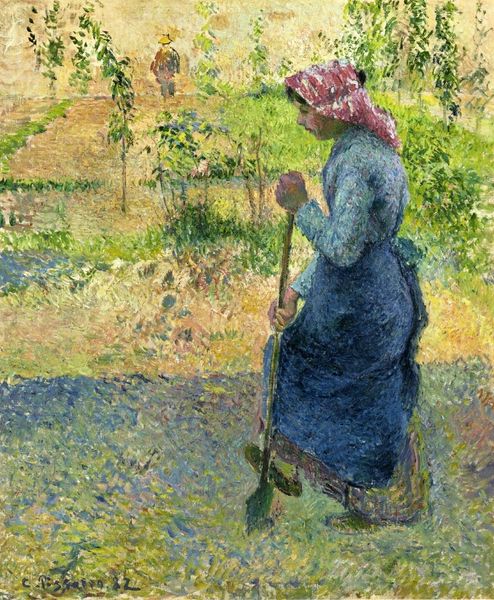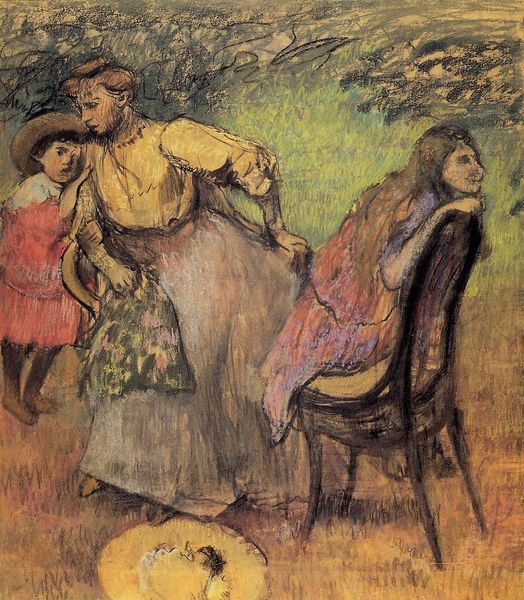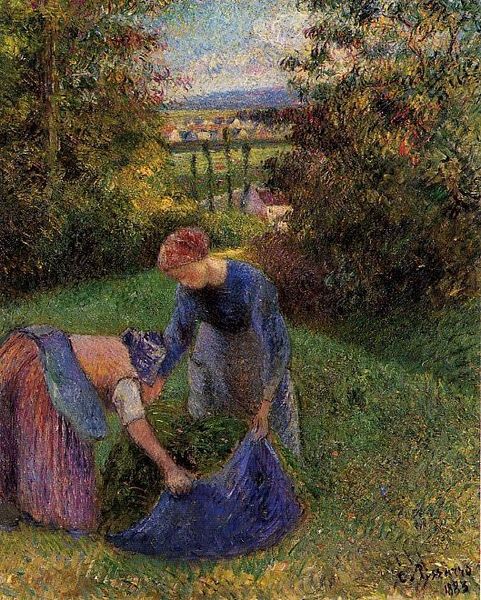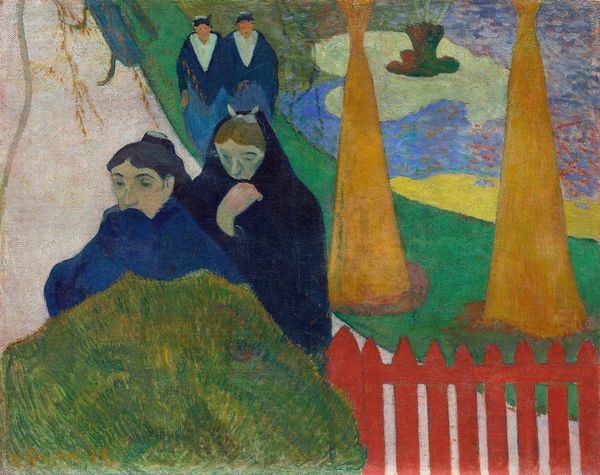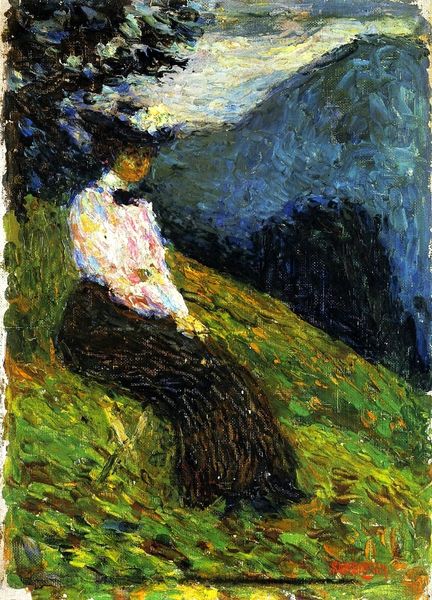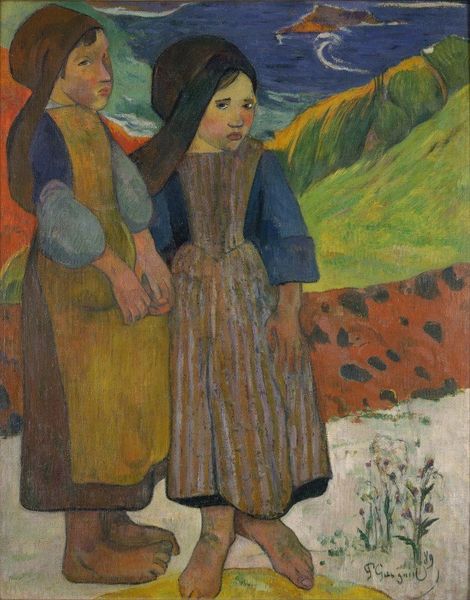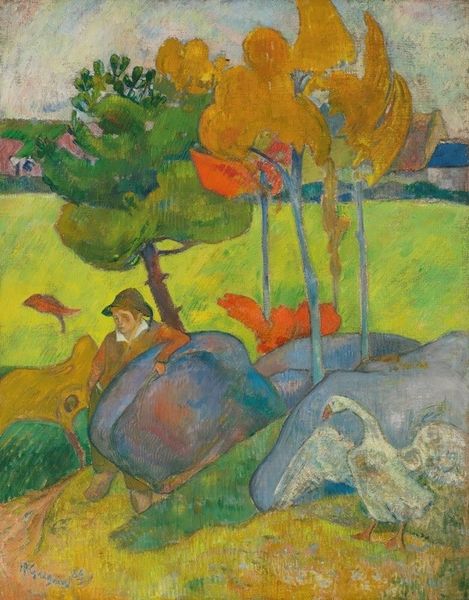
painting, oil-paint
#
portrait
#
painting
#
oil-paint
#
landscape
#
oil painting
#
symbolism
#
genre-painting
#
post-impressionism
Copyright: Public domain
Curator: Today we’re observing "Seated Breton Girl," painted by Paul Gauguin in 1889, which resides here at the Ny Carlsberg Glyptotek in Copenhagen. He created it using oil paints. Editor: What strikes me immediately is how grounded she feels, yet her coloring is almost ethereal, other-worldly. The colors used seem to elevate the subject and suggest at themes beyond peasant life. Curator: Yes, it’s key to note that Gauguin produced this painting after his initial trip to Pont-Aven in Brittany. Brittany provided a haven of traditional culture which was seemingly disappearing with industrialism in France. Here, Gauguin, like others at the time, saw opportunity for what he conceived of as artistic authenticity and cultural heritage, although his positioning to the region has been problematized since then. Editor: That context certainly complicates how we read this image, especially noting the tension between her humble dress and the very obvious artifice of the application of paint itself, and his flattening of planes. There’s something uneasy here, almost performative. Curator: Absolutely. Consider the art market in Paris. Breton imagery had become quite popular and artists were keen to tap into this vogue for rural scenes. It begs the question of authenticity versus what the market desired and was conditioned to expect. Also, Breton women held specific positions in society. Their clothing designated place within social hierarchy. Gauguin made particular aesthetic choices that also reinforced exoticist visions of peasant life. Editor: So even this supposedly ‘simple’ representation becomes freighted with social and economic layers, and we must remember it's painted for a consuming Parisian art market. What seemed so immediately ‘genuine’ on first glance becomes a manufactured product with a clear agenda. Curator: Precisely. Examining paintings like these reveals the complexities of representing rural subjects. By diving into his use of materials, production methods, and also situating the work historically, the politics embedded into "Seated Breton Girl" emerge, changing our understanding of this captivating, yet complex, artwork. Editor: This has given me much to ponder when examining this artwork. Thanks for shifting my perception.
Comments
No comments
Be the first to comment and join the conversation on the ultimate creative platform.
